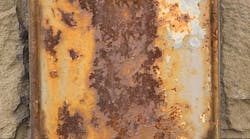In Division 1 or Division 2 locations where the boxes, fittings, or enclosures are required to be explosionproof, if a flexible cord is used it must terminate with a cord connector or attachment plug listed for the location, or a cord connector or attachment plug with a seal that is listed for the location. In Division 2 locations, where explosionproof equipment is not required, the cord can terminate _____.
a) with a listed cord connector
b) with a listed attachment plug
c) in a splice of any manner
d) a or b
See answer and applicable Code reference
The correct answer is: d) a or b
Article 501 focuses on Class I Locations. Section 501.140 contains the requirements for Flexible Cords, Class I, Divisions 1 and 2.
As per 501.140(B)(4), the flexible cord shall be terminated with a cord connector or attachment plug listed for the location, or a cord connector installed with a seal listed for the location.
